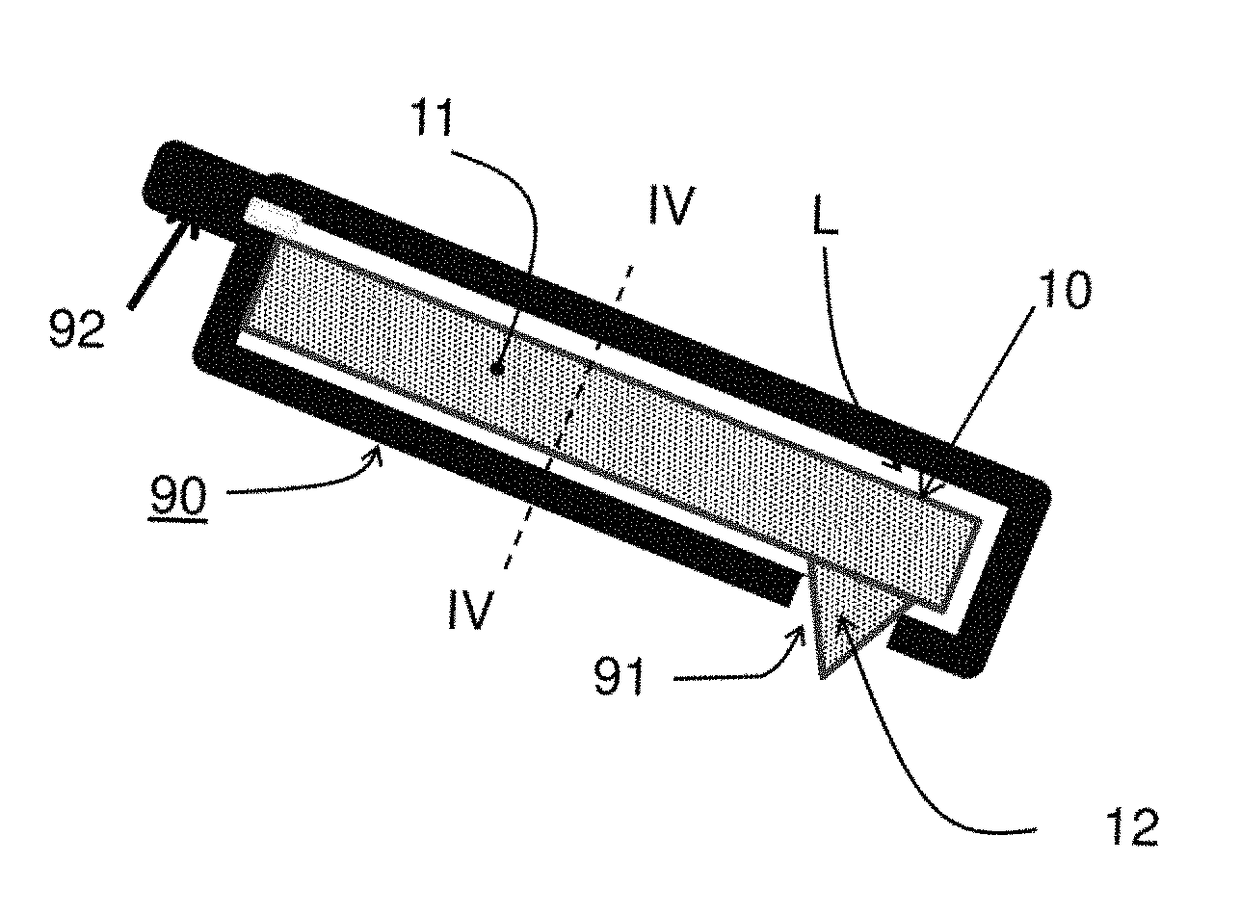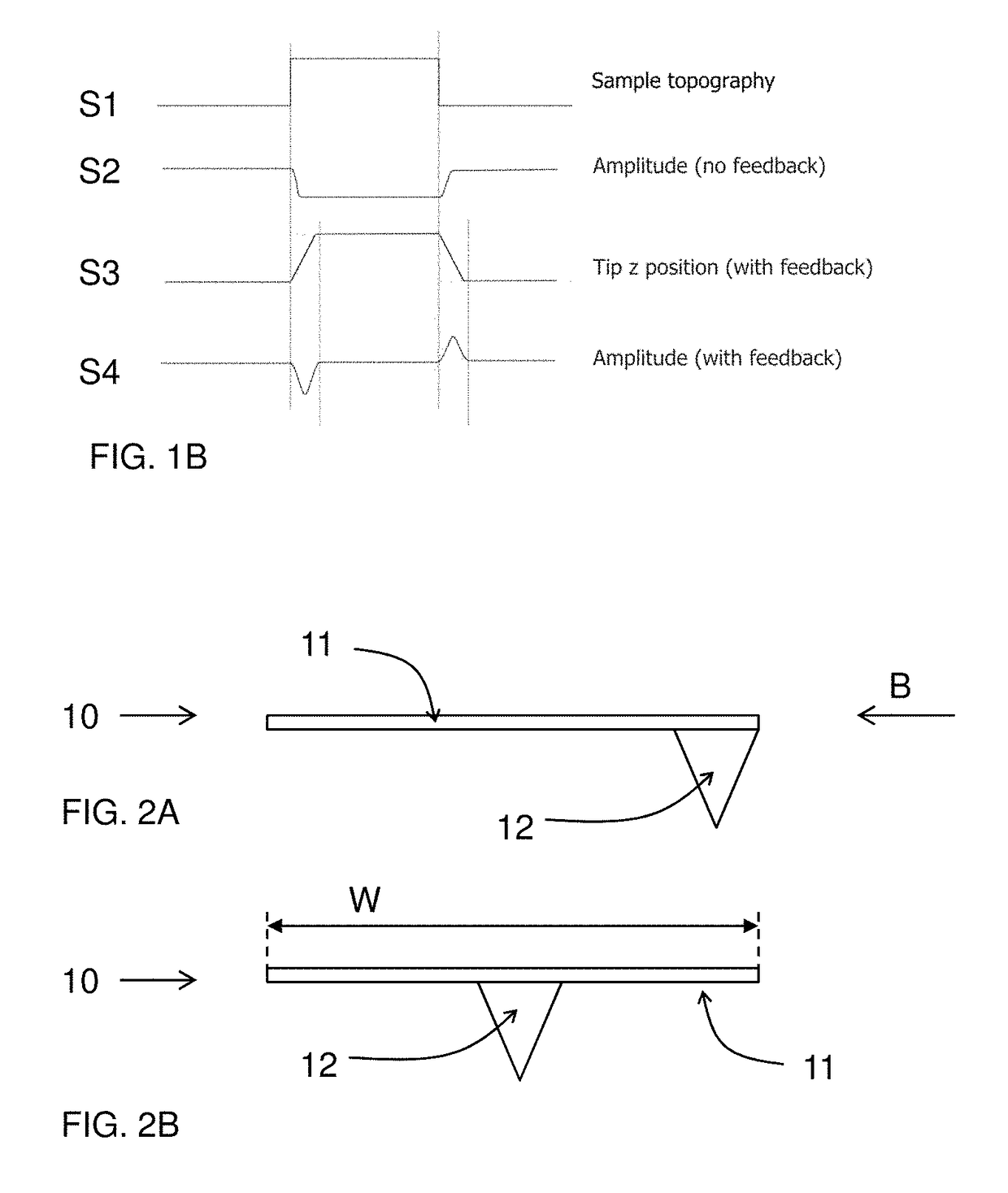Scanning probe microscope with a reduced Q-factor
a scanning probe and q-factor technology, applied in scanning probe microscopy, measuring devices, instruments, etc., can solve the problems of reducing the width of the beam, reducing the accuracy of the beam, so as to improve the damping effect and increase the width
- Summary
- Abstract
- Description
- Claims
- Application Information
AI Technical Summary
Benefits of technology
Problems solved by technology
Method used
Image
Examples
Embodiment Construction
[0050]Like reference symbols in the various drawings indicate like elements unless otherwise indicated.
[0051]FIG. 1 schematically illustrates scanning probe microscope comprising a scanning probe 10 for scanning a sample SMP. In the embodiment shown the scanning probe 10 is formed as a cantilever 11 provided with a tip 12, as shown in FIG. 2A, 2B. Therein FIG. 2A shows a side view and FIG. 2B shows a front view of the scanning probe according to B in FIG. 2A. A holder 5 is provided for holding a sample SMP in an environment free from liquid. In the embodiment shown the sample SMP and the scanning probe are arranged in a housing 7 that can be filled with a gas G. A scanning arrangement 20 is provided for inducing a relative motion of the scanning probe 10 with respect to said sample SMP arranged on the holder 5. In this way the probe 10 can be scanned along a surface of the sample SMP. Various implementations are possible. The scanning arrangement 20 may keep the sample SMP stationar...
PUM
 Login to View More
Login to View More Abstract
Description
Claims
Application Information
 Login to View More
Login to View More - R&D
- Intellectual Property
- Life Sciences
- Materials
- Tech Scout
- Unparalleled Data Quality
- Higher Quality Content
- 60% Fewer Hallucinations
Browse by: Latest US Patents, China's latest patents, Technical Efficacy Thesaurus, Application Domain, Technology Topic, Popular Technical Reports.
© 2025 PatSnap. All rights reserved.Legal|Privacy policy|Modern Slavery Act Transparency Statement|Sitemap|About US| Contact US: help@patsnap.com



